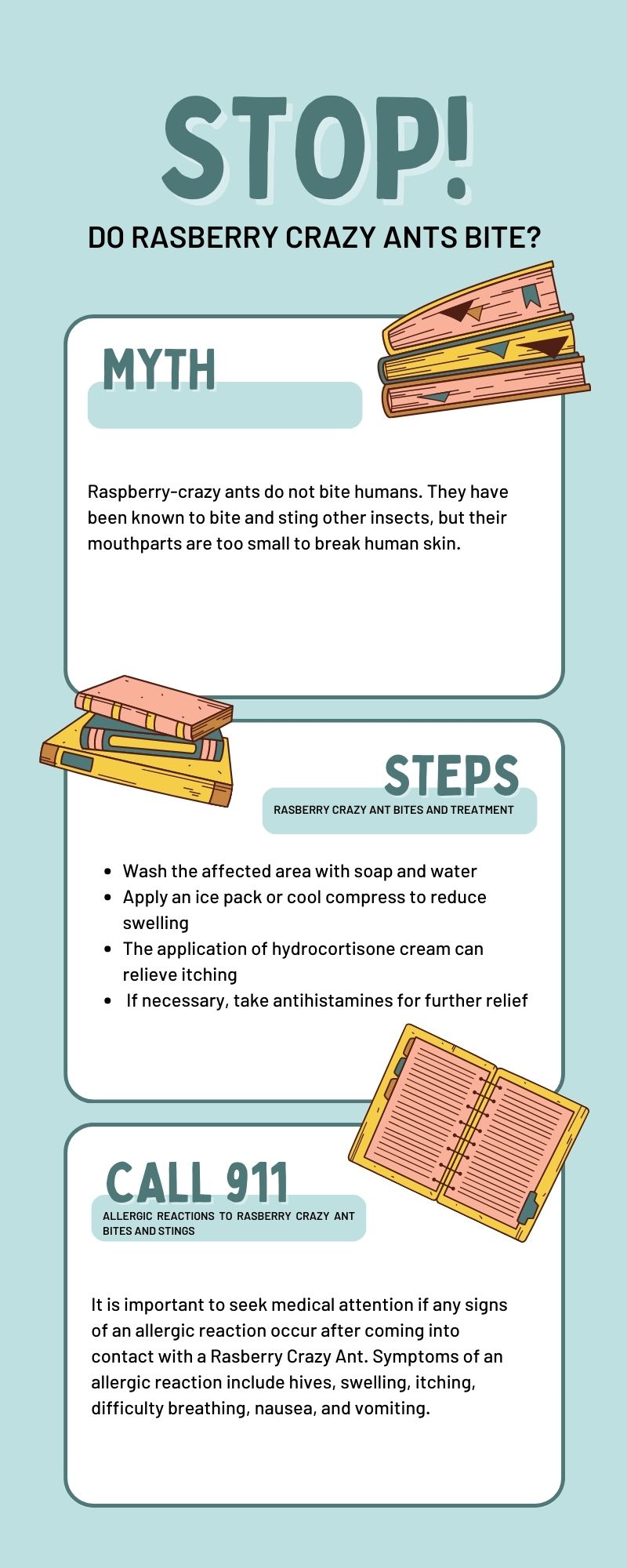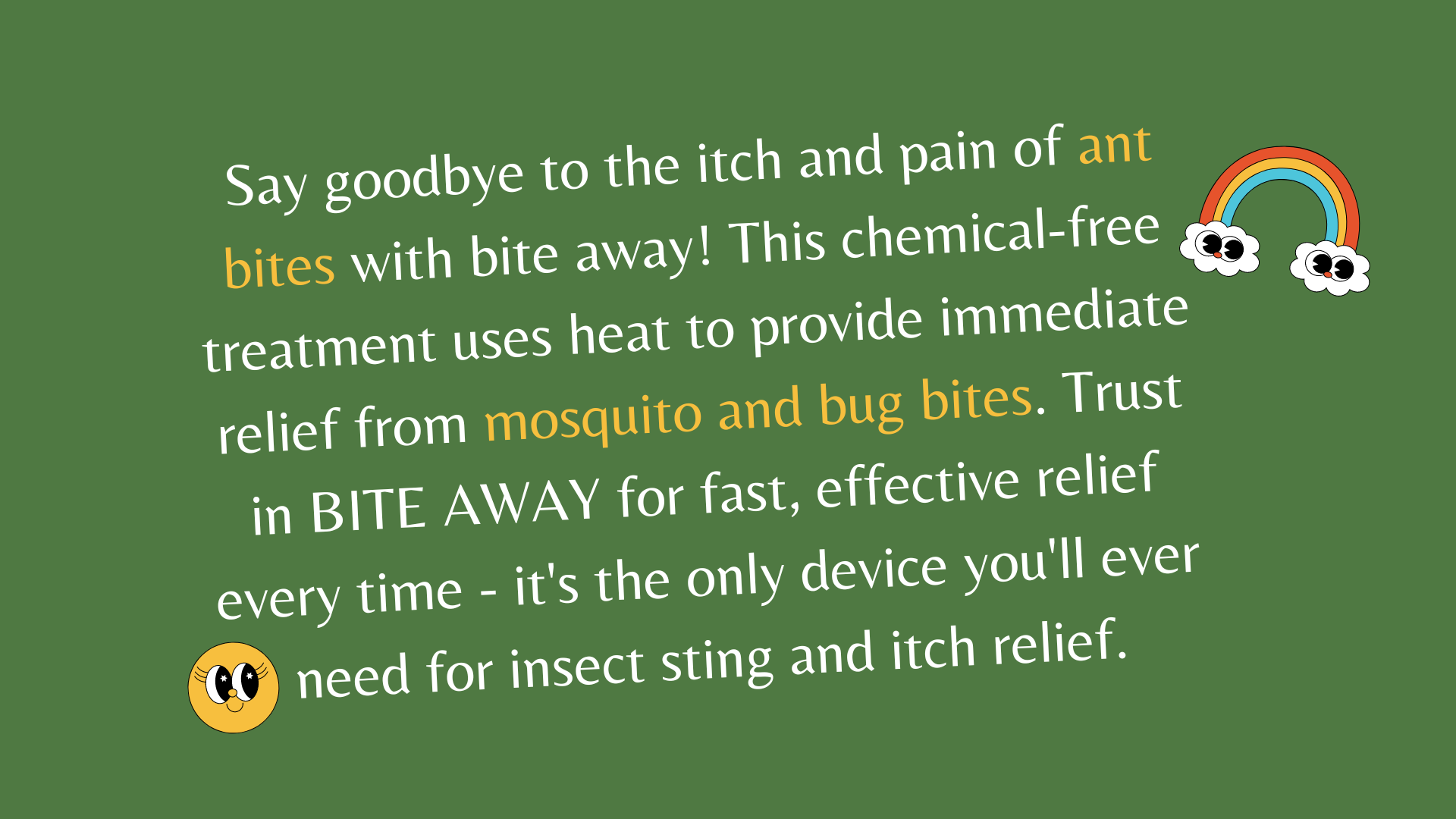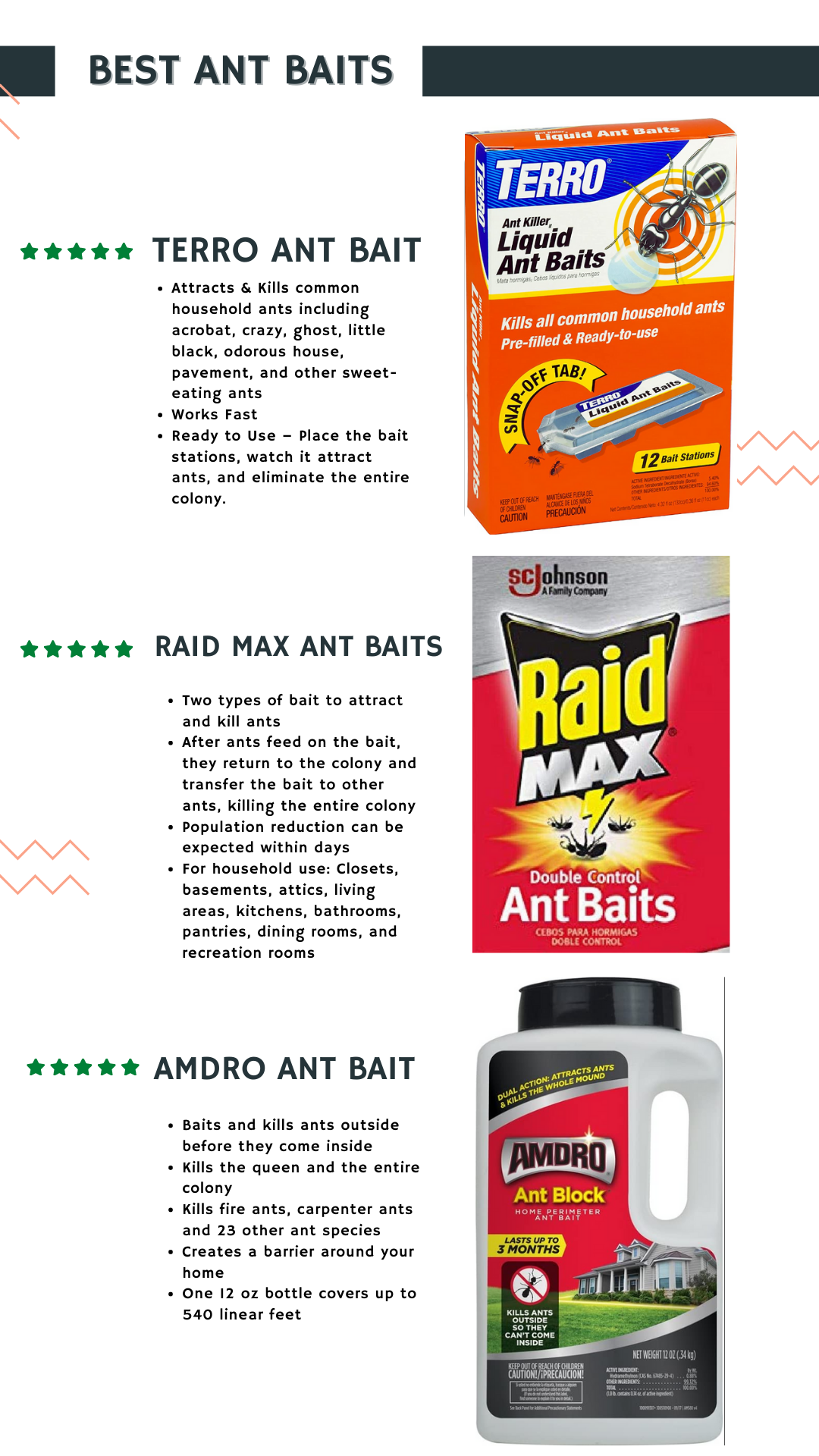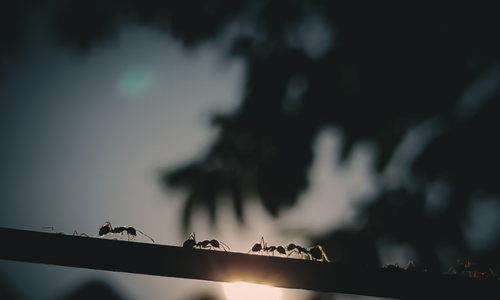Your PERSONAL ANT-CYCLOPEDIA
Rasberry crazy ant (Nylanderia fulva)
Rasberry Crazy Ant Scientific Classification Chart
Phylum Belonging: Arthropods
Class of Belonging: Insects
Order To Which It Belongs: Hymenoptera
Family In Which It Is Located: Formicidae
Subfamily In Which It Is Located: Formicinae
Genus: Nylanderia
Species: Rasberry crazy ant (Nylanderia fulva)
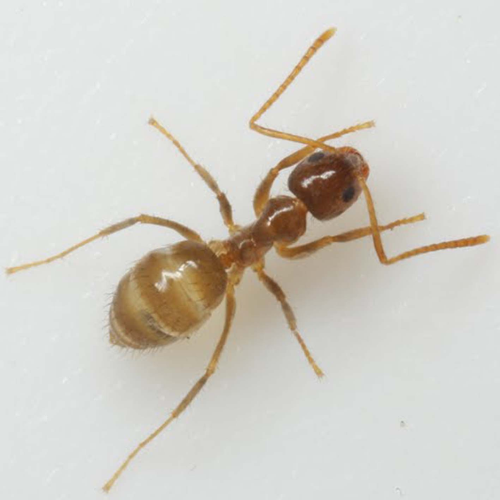
Post Audio Rasberry Crazy Ant
Following our line of articles on exotic crazy ants, now it’s time to talk about one of the most beautiful ant species that exist in the animal kingdom. And yes, you guessed it, I mean the beautiful tawny crazy ant or Rasberry Ant. This exotic arthropod is reputed to be one of the most invasive ants in the world and with a capacity for conquest unmatched in the animal kingdom, but at the same time, it is one of the most interesting crazy ants to collect for ant farming fans.
In this article, we will offer you all the information you need to know the behaviors of this animal, as well as its colonial behavior, all the necessary details for its upbringing, or the steps you must follow to control its population in case of having a pest problem.
Get ready and join us on this amazing journey to meet The Rasberry crazy ant.
Rasberry Crazy Ant Identification
“Pest Stats”
| Color | Gold covered with reddish-brown hairs |
| Legs | 6 |
| Shape | Specific Conformation Of Mouthparts And Unique Mandible Morphology |
| Size | About 3 mm (or about 1/8 inch) long |
| Antennae | 12-segmented antennae |
| Region | Originating in South America, the ants have established colonies in all states of the Gulf Coast of the United States including at least 27 counties. |
What does Rasberry Crazy Ant Look Like?
Description
Rasberry crazy ants are small, light-brown to reddish ants with long legs and antennae. They measure about 1/8 of an inch in length and have a unique rasberry-like odor when crushed.
Geographical distribution (Rasberry Crazy Ant Origin).
Where did the tawny crazy ant originate from? It is native to South and Central America, as well as the Caribbean. However, it has been found in more temperate regions such as Texas and Florida in the United States. It is believed that this species was accidentally introduced to these places via cargo ships carrying tropical goods from its native region.
Rasberry Tawny Crazy Ant Distribution Map In Us
Rasberry crazy ants have not been found to spread beyond the southeastern United States, but they are known to be established in Texas, Mississippi, Louisiana, and Florida during their migration.
In each of these states, their populations appear to be most concentrated in certain areas.
For example, in Texas the greatest concentration appears to be along the Gulf Coast and around Houston; in Mississippi, they are primarily found near Jackson and Hattiesburg; in Louisiana, they seem mainly present near Baton Rouge; and finally, Florida has reported infestations as far south as Miami-Dade County.
Rasberry Crazy Ant Arizona
Rasberry Tawny Crazy Ant Distribution By Country
In the United States, there have been reports of infestations in Texas, Mississippi, Louisiana, and Florida. The ant has spread slowly over time but its exact distribution within each country is not known due to its relatively recent introduction into non-native regions.
They have also been found in Hawaii, Mexico, Belize, Guatemala, Costa Rica, Colombia, and parts of Europe including Spain and Italy.
Rasberry Crazy Ant Brazil



Join The Ant Farming Club!
If you are looking for an Ant Farm and you don’t know which one to choose, or on the other hand you already have your first ant farm, but you don’t know how to grow your colony, take care of it or feed it. Here we offer you the best tips and products to make your colony grow healthy and strong.
In the next section, you will also find advice from professionals to choose the best products on the market such as:
- Luminous Gel
- Ant Farm Sand
- LED light
- Live Ants
- Full Ant Farm Kits For Kids
Ant Farming Club is perfect for kids wanting their first ant farm or schoolteachers wanting to show their students the biology of ants in a natural habitat.
Join
Join and learn all about the world of ants and ant farming.
Products & Discounts
Find discounts and advice from professionals about the best products on the market in 2022.
Meet
Connect with people who are passionate about the world of entomology.
Do Rasberry Crazy Ants Bite?
Tawny Crazy Ant Venom
Rasberry-crazy ants do not bite humans. They have been known to bite and sting other insects, but their mouthparts are too small to break human skin.
Rasberry Crazy Ant Bites and Treatment
Tawny-crazy ants are not known to bite humans. Although they may crawl on people, they typically do not cause any harm or discomfort. If a person is bitten by one of these ants it will usually be no more than an annoyance and won’t require medical treatment.
If a person does experience discomfort from the bite, there are several steps that can be taken to reduce swelling and/or itching:
- Wash the affected area with soap and water
- Apply an ice pack or cool compress to reduce swelling
- The application of hydrocortisone cream can relieve itching
- If necessary, take antihistamines for further relief
Allergic reactions and effects to Rasberry Crazy Ant bites and stings
There are no known allergic reactions associated with these ants. However, it is possible that some individuals may be more sensitive to these ants and have an allergic reaction when they come into contact with them.
It is important to seek medical attention if any signs of an allergic reaction occur after coming into contact with a Rasberry Crazy Ant. Symptoms of an allergic reaction include hives, swelling, itching, difficulty breathing, nausea, and vomiting.

About this item
- Benadryl Extra-Strength Anti-Itch Gel temporarily relieves pain and itching associated with insect bites, minor burns, sunburn, minor skin irritations and rashes due to poison ivy, poison oak and poison sumac.
- Topical analgesic gel provides cooling, anti-itch relief from most minor pains and outdoor itches associated with insect bites.
- The cooling gel provides the relief of pain and itching associated with insect bites.

More Immediate Treatment management for Rasberry Crazy Ant Bites:
Long-term Treatment management:
The best way to avoid getting bitten by Rasberry Crazy Ants is to take preventive measures. This includes keeping your home and yard free of clutter, removing potential food sources (including crumbs or pet food), sealing cracks in the walls and floors, using a pesticide barrier around the foundation of your home, and regularly inspecting for ant infestations.
The most important long-term treatment management strategy after being bitten by Rasberry Crazy Ant is prevention through regular inspection and maintenance of your living areas.
Additionally, informing family members about proper precautions when dealing with these pests can help reduce risk further.
If you find an infestation on your property, call a pest control professional immediately for proper removal.

About this item
- Benadryl Extra-Strength Anti-Itch Gel temporarily relieves pain and itching associated with insect bites, minor burns, sunburn, minor skin irritations and rashes due to poison ivy, poison oak and poison sumac.
- Topical analgesic gel provides cooling, anti-itch relief from most minor pains and outdoor itches associated with insect bites.
- The cooling gel provides the relief of pain and itching associated with insect bites.


Natural Behavior Rasberry Crazy Ant
This ant is a highly adaptable species that prefers tropical to subtropical climates. Though originally found in South America, it has been accidentally introduced to the US and is now found in parts of Texas, Florida, Mississippi, Louisiana, and other southern states.
In its natural environment, it can be observed foraging on the ground or climbing trees in search of food such as insects or sugary substances like honeydew secreted by sap-sucking bugs.
The ants are also known to nest under stones or logs and rarely invade homes but can often form large colonies outdoors near structures inhabited by humans. As they feed on sugar sources they tend to create trails between their nests and food sources which helps them find their way around faster.
Is a Rasberry crazy ant the same as a fire ant?
No, a Rasberry Crazy Ant is not the same as a Fire Ant. The Rasberry Crazy Ant is native to South America and can form large colonies.
Fire Ants (Solenopsis invicta) are also an invasive species that have spread across much of the southern United States. They are dangerous for their painful sting and ability to quickly build very large colonies.

Funny Fact About Rasberry Crazy Ant
What are the predators of the crazy ants?
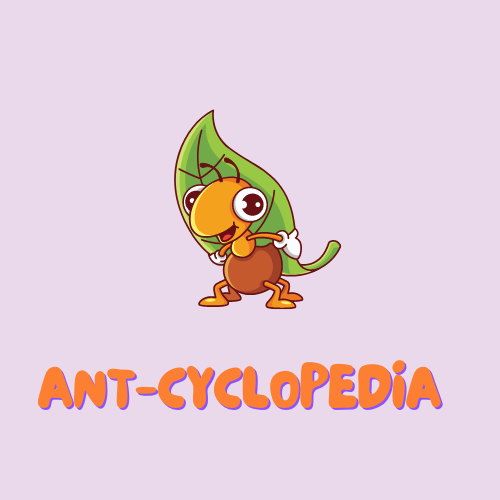
The primary predators of crazy ants are other ants, such as the red imported fire ant and pharaoh ant. Other animals that prey on crazy ants include:
- Spiders,
- Lizards,
- Frogs,
- Birds and
- Mammals.
What do crazy ants hate?
Crazy ants hate anything that disrupts their food sources, such as pesticides and other chemical treatments. They also dislike tight spaces or environments where they can’t forage easily.
Rasberry Crazy Ant Photos And Pictures
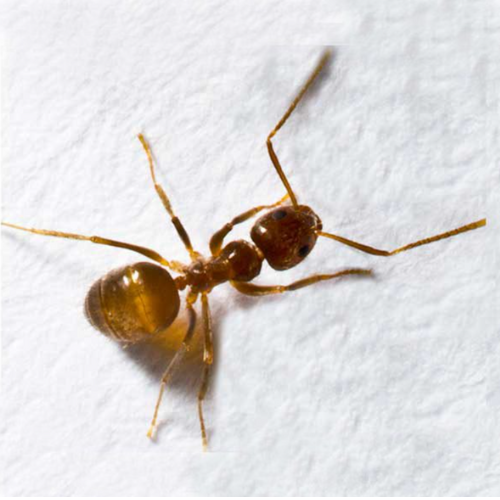
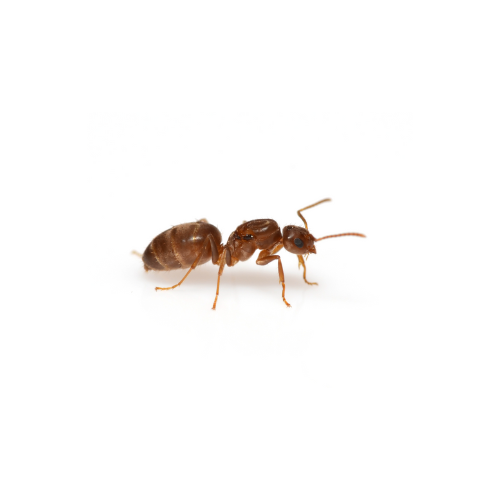

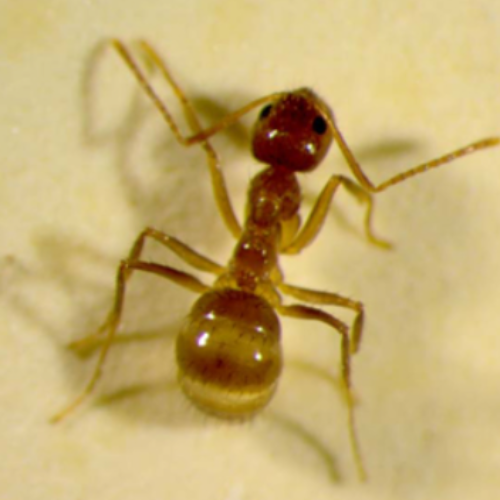
Seasonal Colony Trends [All You Should Know]
Rasberry Crazy Ant Reproduction (Reproductive Biology)
These species reproduce through a process called parthenogenesis, meaning that the female ant is able to lay eggs without mating with a male. The eggs hatch into larvae and pupae which then emerge as adult ants.
In some cases of gestational parthenogenesis, however, males are produced but they do not mate with females and die shortly after emerging from their pupal stage.
Rasberry Crazy Ant Habits
They often build their nests close to human dwellings like homes, businesses, and gardens, making them a nuisance pest for homeowners.
The Rasberry crazy ant is an omnivore, meaning it will feed on both plants and animals. It prefers sweet foods such as honeydew from aphids or other insects they find while foraging, but also enjoys sugary items such as spilled beverages or food scraps in garbage cans.
The ants will even visit hummingbird feeders or outdoor pet dishes as food sources if available.
These ants reproduce very rapidly; each female may produce hundreds of eggs throughout her lifetime which can hatch within days depending on temperature and moisture levels.
The colonies are usually controlled by a single queen ant who lives underground with thousands of workers that act together like a giant family unit to protect the colony’s resources while searching for food around neighboring areas nearby. Rasberry Crazy Ants typically move around during daylight hours when temperatures reach their highest point before going back into hiding at nightfall when temperatures start cooling down again – this behavior allows them to avoid predators and extreme weather conditions during certain times of day or night time periods!
Rasberry Crazy Ant Environmental Impact
The Rasberry Crazy Ant has had a significant environmental impact since its arrival in the United States.
The ants are native to Central and South America, but they have spread as far north as Texas, Gulf Coast states, and even parts of Florida.
These aggressive ants are known for their large colonies which can contain millions of members and quickly take over desirable habitats by outcompeting other species for resources like food. This displacement of species disrupts the delicate balance between predator and prey within an ecosystem.
Rasberry Crazy Ant Human Impact
Additionally, these ants often build nests near electrical equipment causing short circuits due to their interference with wires or power switches while searching for food sources inside machinery.
This can be costly in terms of time and money spent on repairs or replacements that wouldn’t otherwise have been necessary if not caused by the presence of these invasive insects. (This is a high impact on the economy).
Threats To Humans (Are Rasberry Crazy Ant harmful?)
No, rasberry-crazy ants are not harmful to humans. These ants do not sting or bite people and they do not spread any diseases.

Rasberry Crazy Ant Education (Rasberry Crazy Ant Life Cycle)
These tiny creatures may seem harmless at first glance, but they are notorious for their invasive behavior and rapid reproduction.
We’ll take a closer look at the life cycle of these fascinating insects and explore the unique characteristics that make them stand out from other ant species.
Environmental Requirements
1. Temperature: Rasberry Crazy Ants prefer warm temperatures, ideally between 70 and 90 degrees Fahrenheit (21-32°C).
2. Humidity: These ants appreciate humid environments but can tolerate a range of humidity levels from low to high. They do best in areas with 60%-70% relative humidity.
3. Sunlight: Rasberry Crazy Ants need access to some sunlight, which helps them keep their nests warm during the day and provides essential vitamins that help promote healthy growth for the colony as a whole.
4. Shelter: These ants build elaborate tunnels underground in order to protect themselves from predators and extreme weather conditions; they also create intricate networks of chambers within these burrows where they store food supplies and raise young ant larvae.
In addition, these tunnels serve as protection against flooding or other water damage by providing an escape route for the colony if needed.
Rasberry Crazy Ant Nutrition And Diet
Rasberry Crazy Ants are omnivorous, which means they feed on both plants and animals.
Their diet consists mostly of:
- Other insects,
- Honeydew From Plant-feeding Insects such as aphids,
- Small Invertebrates
- And Bits Of Fruit or pollen if available
They collect food by foraging in their immediate environment. In terms of nutrition, these ants need a balanced diet to thrive.
They require:
- Carbohydrates (fruit),
- Proteins (insects)
- And vitamins/minerals found in both plant sources and the tiny creatures they eat.
In addition to their natural food sources, Rasberry Crazy Ants can also benefit from supplemental feeding with nutritionally complete ant foods such as those created specifically for this species.
Nests and Colonies
As their name suggests, these small, reddish-brown creatures build large nests and colonies that can quickly spread over an area.
These nests typically consist of sand or soil mounds from which the ants construct galleries below the ground.
These galleries serve as pathways for traveling throughout the nest and connecting separate chambers used for feeding, nesting, and reproduction. The colony’s queen resides in her own protected chamber where she produces eggs that will eventually become new members of the colony. Young larvae feed on proteins secreted by adult workers until they mature into adults capable of collecting food themselves.
Rasberry crazy ant colonies can also contain several hundred thousand individuals who cooperate by carrying food back to their nest mates or working together to build tunnels and repair damage from outside sources such as predators or unfavorable weather conditions.
Rasberry Crazy Ant Queens
Rasberry Crazy Ant Queen Appereance
In terms of physical characteristics, Rasberry Crazy Ant Queens are larger than worker ants and typically measure between 5-7 mm long. They possess three distinct body segments: a head with two antennae, a thorax with six legs, and an abdomen. The queens also have wings when they first emerge from the colony as adults but lose them shortly after mating flights occur.
Purpose In The Colony
Rasberry Crazy Ant queens lay up to 800 eggs per day during peak activity periods; however, these numbers may vary depending on environmental conditions such as temperature or food availability.
Additionally, while most colonies only have one queen at any given time, some may contain multiple queens that coexist peacefully within the same nest structure.
Overall, due to their rapid reproductive rate combined with their highly destructive nature towards electrical systems in homes and businesses alike – it is important for people living near infested areas to take proactive measures against these pests before additional damage occurs!
The Best Products 2023
Formicarium
Formicarium
Ant Farm
Ecosystem
Entomology supplies
Test Tube Packs
Pipettes
Feeding Dishes
Ant Foods
Ant Nectar
Feeders
Eco-Fresh Rice Worms
Fly Larvae
Kits
Terrarios
Nest Kit
Ant Farm Sand
Ant Farm Neon Gel
Rasberry Crazy Ant Pest Prevention & Control
Tawny crazy ant biological control
Why are rasberry crazy ants a problem?
This invasive species can damage crops, contaminate water sources, and disrupt native ecosystems. They also displace beneficial insects such as pollinators.
These arthropods can become a nuisance to homeowners as they swarm in large numbers and create electrical shorts in homes by crawling on circuit boards.
Prevention
1. Keep your property clean and clutter-free: Keeping a tidy exterior, yard, and home helps to reduce the potential for rasberry crazy ant infestations by eliminating potential nesting sites. Regularly trimming overgrown plants or removing any excess debris like wood piles can help make your property less appealing to these pests.
2. Seal up cracks in foundations and walls: Sealing up any cracks in the foundation of your home or on walls can help prevent rasberry crazy ants from entering your living space. Make sure all doors and windows fit securely and are sealed properly to keep them out!
3. Use chemical barriers along entry points: Using an approved insecticidal barrier around entry points such as doorways, windowsills, garages, decks, porches etc., will create a physical barrier between where they live outside and where you live inside – preventing them from gaining access into living spaces in search of food sources or shelter.
4. Monitor their activity: Monitoring their activity with baits or traps placed near known paths/areas used by the ants can be helpful in identifying current problems as well as reducing future ones–especially if done regularly throughout the year when seasonal changes occur that may cause more populations of rasberry crazy ants to appear closeby!
Wanna learn more about Ants? Join an Online Community of more than 1000 Readers Around the Country.
Here you can sign in to our newsletter to receive daily emails with funny facts, interesting details about ants, step-by-step tutorials, and even good practices to have a healthy ant farm colony. We’ll be more than happy to have you in…

How to Get Rid of Rasberry Crazy Ant (Easy Steps)
1 – First Step: Inspection & Control
The best way to determine if you have a pest problem is to inspect your property for signs of an infestation.
Look for ant trails, ant nests in walls and ceilings, small piles of dirt or wood debris near entry points and other evidence of pests.
If you do suspect that there may be a pest issue at your home or business, it is important to call a professional exterminator as soon as possible to properly identify the type of pest present and develop an appropriate course of action to eradicate the pest quickly.
2 – Second Step: Natural Methods To get rid of Rasberry Crazy Ant
Outdoor And Indoor Organic Rasberry Crazy Ant Ant Pest Control Products
Diatomaceous Earth
Diatomaceous Earth is a naturally occurring soft sedimentary rock that has been ground down to a fine white powder.
This powder damages the exoskeleton of insects, so it acts as a barrier that Rasberry Crazy Ant won’t cross.
If you have potted plants on a shelf, you can put a small amount of diatomaceous earth down by the legs of the shelf, preventing ants from getting up onto the plants.
These barriers can be put virtually anywhere, both indoors and outdoors.
While Diatomaceous earth is safe for humans to handle and even eat, it does create fine dust that should not be inhaled.

PROS About Diatomaceous Earth
Among its most striking advantages is the low risk to the health of people, children, and pets, as well as the residual years that this compound can have in our home, providing extra protection against pests. This material is not recommended for use on carpets or floors that you would vacuum.
CONS About Diatomaceous Earth
Although this product represents a non-chemical solution to avoid chemical pesticides. This powder can have some drawbacks. An example of this is that insects need to have direct contact with the material, as well as prolonged contact for it to have a greater effect. This means, that if we decide to use this. We must distribute it throughout our home in large quantities. On the other hand, Diatomaceous Earth must be kept dry, so it is not a good idea if we want to use it in our gardens that are damp from irrigation.
Despite its low toxicity. This material could not be used to kill ants if it did not have some level of danger to the health of insects, so the use of dust masks is recommended, as well as applying it in ventilated areas since this dust could cling to the mucous membranes of the nose and mouth. Also, the dust could fly and generate allergies if we apply it in places where there are fans or air conditioning.
Boric Acid
Boric Acid is a type of Acid found in many naturally occurring minerals, such as borax. Borax is found in many cleaning products, including some types of toothpaste.
Boric Acid has a very low toxicity level for mammals but not for ants. It interferes with their digestive system and slowly terminates them.
The trick is to keep the level of boric Acid low enough so that it travels through the colony and makes it to the queens and young before killing the ants.
I will give you a personal recommendation of a product that is currently on the market called Terro. This contains borax, and I found it effective against Rasberry Crazy Ant.
You can also find recipes online to make your own bait at home using borax. (Here are the steps if you are interested)

PROS About Boric Acid
This product dissolves easily in water, which allows us significant savings. On the other hand, it is more granular than powder. Which makes it less likely that we will inhale it by mistake.
It is useful for other types of pests, such as cockroaches.
CONS About Boric Acid
In very humid climates, if not stored properly, it can become damp and ruined. Therefore, it is recommended to store the mixture in a gallon Ziploc bag to keep it dry and protected when not in use.
Essential oils
Rasberry Crazy Ant communicate with each other using pheromones. A forager that finds food marks a trail on the way back to the colony. This scent trail is followed by other ants, and these ants then reinforce the trail when they head back to the colony with food.
Pheromones also help ants tell each other apart, warn each other of danger and communicate all sorts of messages we’re only beginning to understand.
Most essential oils have a very strong fragrance. We can use this strong fragrance to mask pheromone trails and disrupt the coordination of ants. This method, in addition to being very efficient, allows you to drive away the ants in a natural way without causing them harm.
Essential oils can be added to soapy water that can be used to clean pots and shelves where we keep cacti and succulents. This will mask any previous messages ants left behind to tell other ants… HEY! There is a good food source, water, or shelter.
My Favorite essential oils to use for ants are:
- Peppermint
- Cedarwood
- Lemongrass and
- Clover
However, there is a high range of essential oils that we can use to keep ants away from our homes. Below we offer you a select list of the most efficient oils with the best results on the market.

Pros About Essential Oils
These essential oils represent rapid elimination and residual repellency. which means many months of additional protection.
On the other hand, this represents a highly respectful pest control with our environment.
In the case of living with other beneficial insects for us, such as bees or other pest-control insects. These represent minimal risk.
Finally, as we all know. Essential oils offer us a natural and pleasant fragrance for our home.
Cons About Essential Oils
Essential oils are very useful for many purposes despite their effectiveness in pest control. We may need large amounts to eradicate large ant colonies. Essential oils are expensive, so it can cost us a few dollars to completely eradicate an ant colony.
3 – Third Step: Insecticides and Ant Baits To Control Rasberry Crazy Ant (Best Crazy Ant Killer)
Best Ant Bait For Rasberry Crazy Ant
We recommend using an ant bait containing borax or boric acid as the active ingredient. These baits have been proven to be very effective at controlling the Rasberry Crazy Ants and other species of ants.
Place the bait in areas where you’ve noticed ant infestations, such as near windows, doors, baseboards, plumbing fixtures and other points of entry for these pests.
Be sure to keep children and pets away from any ant bait products!
MORE Rasberry Crazy Ant BAITS
- Baits (protein/fat-based baits).
- Honeydew Aphid Baits
- Nectar baits
- Plant product baits as well as sugary carbohydrates.
Sugar feeding cycles
Rasberry crazy ants feed on a variety of sources throughout their life cycle.
These include honeydew from Homoptera insects, plant sap, other insects, and arthropods, as well as fruit and nectar.
The feeding cycles for these ants can vary depending on the availability of food in their environment and the seasonality of particular resources. Generally, it is believed that rasberry crazy ant colonies have continuous sugar-feeding activity throughout the year with a peak during the summer months when fruits are most plentiful.
Rasberry Crazy Ant Protein/Fat Feeding Cycles
The feeding cycle for these ants involves searching, harvesting, storing, and consuming protein-rich food sources such as small insects or dead animals.
In addition to the protein they obtain from prey items, rasberry crazy ants also need lipids (fats) for energy reserves. When they find a lipid-rich resource like honeydew secreted by aphids or other insects, they will gather it up into balls and transport it back to their nests where it can be stored until needed.
In general, Rasberry crazy ants should have a balanced diet of both proteins and fats every day in order to stay healthy.
This means that while out looking for food sources during the day, they will seek out both protein-rich items such as small insects or dead animals as well as lipid-rich foods like honeydew secreted by other insects.
They store these resources at their nests until needed so that when hunger strikes during peak activity times throughout the day (usually dawn and dusk), there is an abundance of available fuels ready to go!
Rasberry Crazy Ant Control Using Insecticides
1. Use insecticides specifically labeled for control of rasberry crazy ants. These include products containing pyrethroids, spinosad, carbaryl, and/or abamectin. Make sure to follow label directions exactly when using any pesticide product.
2. Apply a wide perimeter treatment around the structure where rasberry crazy ants are nesting or entering the building. Treat heavily infested areas with an appropriately labeled liquid concentrate insecticide applied with a hand pump sprayer or power sprayer according to the manufacturer’s instructions. Make sure to treat 3 feet up and 3 feet out from the nest site and all cracks and crevices associated with it, including doors and windowsills that may serve as access points for these invaders into your home or business.
3. When treating large outdoor areas such as lawns or landscapes that are highly infested by rasberry crazy ants, use granular products at high rates along with broadcast spraying of appropriate concentrations of liquid formulations directly over ant trails on turfgrass sites or other landscape features such as sidewalks, patios, etc… Consult your local extension agent for specific application information to obtain longer-lasting control results over time.
4. Follow-up treatments may be necessary after initial applications have been made to maintain adequate control of rasberry crazy ant populations within treated sites throughout different times of the year depending on environmental conditions present at those locations during certain periods.
Rasberry Crazy Ant Control Using Pesticides
1. Use insecticide baits to target the ant colonies. It is important to use bait that has a low toxicity/low-risk level such as boric acid or fipronil. Apply these products at strategic locations around your home and yard, such as along walls, sidewalks, and other areas where ants are commonly seen.
2. Perimeter spray with a long-lasting residual insecticide for Rasberry Crazy Ants, such as permethrin or cyfluthrin (e.g., Suspend SC). These products should be used in combination with the baits for best results and re-applied every 4 weeks during hot weather months when activity typically peaks due to environmental cues like heat and moisture levels in the air. Make sure to follow all label directions carefully when using any pesticide product on your property!
3 . Cut off food sources by keeping your lawn mowed regularly—Rasberry Crazy Ants feed primarily on honeydew produced by sap-sucking insects like aphids, scales & mealybugs; hence removing them from your landscape can help reduce their numbers naturally!
Additionally, remove anything from outdoor spaces that may collect water – this includes old tires & other debris which will attract ants seeking out moisture sources (these can also serve as breeding sites). Lastly, make sure trash cans have tight-fitting lids to prevent access & seal off any cracks/crevices around windows/doors of your home using caulk or expandable foam insulation; this will help limit entry points into structures from outside scavenging populations of ant species living outdoors nearby…
Subfamilies Of Ants
View More
View More
Ant SubFamily Group 3
View More

Did You Know That…
Why are crazy ants attracted to electronics?
Crazy ants are attracted to the heat and electricity emitted from electronics.
They have been known to nest inside:
- Electrical boxes,
- Home appliances,
- Air conditioning units,
- Computers,
- Televisions, and more.
This is because the warm environment provides an ideal nesting site for them. The crazy ant also feeds on insects that build up in these electronic devices as well as any food residues present.
How to Raise a Rasberry Crazy Ant Colony? The Ultimate Guide
Are you looking for a new and exciting challenge in the world of ant keeping?
Look no further than the rasberry crazy ant! These tiny yet fascinating creatures are known for their quick movements, unique behaviors, and ability to form massive colonies.
But how do you go about raising your own colony of rasberry-crazy ants? We’ll take a closer look at these incredible insects and give you all the tips and tricks you need to start and maintain your own rasberry-crazy ant colon successfully
Chapter 1: Getting Started in Rasberry Crazy Ant Keeping!
How to get a Rasberry Crazy Queen ant?
A Rasberry Crazy Queen ant can be purchased from an online ant supplier or breeder. The best way to find a reputable source is to research online and read reviews of the different breeders before purchasing. Some suppliers may also offer live delivery options, where you can receive your ants directly at your doorstep.
How to identify a Rasberry Crazy queen ant?
These queens are easily identified by their distinctive red and black coloration.
They have long, slender abdomens with bright red heads and thoraxes, while the rest of the body is black. Additionally, they can be distinguished from other species of ants by the thick white line running down their backs that separates them from other ants in their genus.
Time for a queen ant to start a new colony
The queen ant typically begins a new colony by leaving her existing colony and flying to mate with other male ants. This is known as the nuptial flight and usually takes place in late spring or early summer, depending on the ant species.
Capture the Rasberry Crazy Ant queen with care.
To capture a Rasberry Crazy Ant queen, you should use a very small paint or insect brush to delicately maneuver the queen into a clean, dry container. It is important to be gentle and cautious with the queen so as not to cause her any harm. Once she is in the container make sure it is properly sealed so that she cannot escape.
If possible, keep the temperature of the container consistent with her natural environment in order to ensure her health and safety.
Finally, remember to always wash your hands after handling ants!





The Best Products 2023
Formicarium
Formicarium
Ant Farm
Ecosystem
Entomology supplies
Test Tube Packs
Pipettes
Feeding Dishes
Ant Foods
Ant Nectar
Feeders
Eco-Fresh Rice Worms
Fly Larvae
Kits
Terrarios
Nest Kit
Ant Farm Sand
Ant Farm Neon Gel
Ant Farm Ecosystems
| Ant Farm For Classroom | Light-up Ant Habitat |
| Ant House With Feeding Area | Wall Hanging Ant Farm |
| An ecosystem with live ants | Ant farm for Preschool |
| Pet Anthill Ant House | Nest Insect Castle |
| Glow In The Dark Ant Farm | Aquariums For Ants |
| Ant Farm With Instructions | Ant Farm With Queen |
| LED Ant Farm for Live Ants | Connectable Ant Farm |
| Ant Farm For Kids | New Large Plaster Ant Farm |
| Pocket colony | Ant Farm With Queen |
Ant Farm Supplies
| Feeder | Feeding Area |
| Tunneling sand | Tunnel starter tool |
| Ecological Ant farm gel | Ants farming aphids |
| Nutrition and Care | Ants farming mushrooms |
| Ecological blue gel | Fungus for ant farms |
| Handcrafted Wood | Ant habitats |
| Ant Plastic Tubes | Ant Glass Tubes |
| Food for ants | Ant Farm Nectar |
| Ant Farm Live Insects | More Supplies |
Live Ants For Sale
| Live Ants | Best ant species |
| Coolest Ants To Keep | Interesting Ants |
| Fungus-farming ants | Exotic ants |
| Big Ants | Buy Queen Ant |
| Buy Worker Ants | Buy Soldier Ants |
| Domestic ants | Fungus farming ants |

